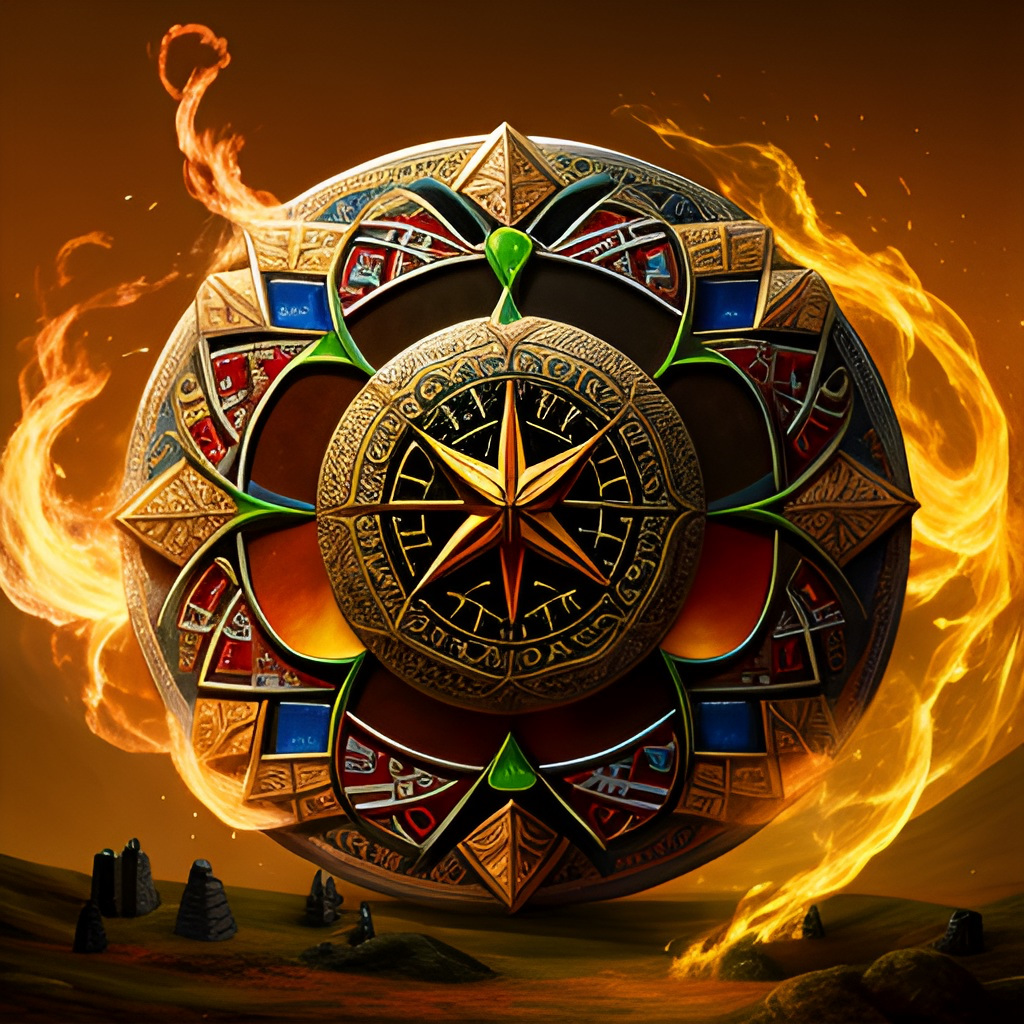Paganism and Christianity in the 8th Century Bulgarian Empire.
Under the vast, star-dappled sky of the 8th century Bulgarian Empire, the wind whispered tales of clashing deities and murmured prayers to a singular God. In this crucible of faiths, paganism, rooted deep in the soil of ancient traditions, stood defiant against the rising tide of Christianity, a religion with its sights set on shaping the empire’s destiny.
The Bulgars, a fierce nomadic people, had long worshipped a pantheon of deities led by Tangra, the Sky God, and Perun, the Thunderer. Their rituals were woven into the fabric of life, from sacrifices to appease the gods to the rhythmic chanting that echoed through sun-drenched meadows and smoke-filled huts. The land itself was sacred, pulsating with unseen powers, and the shamans, cloaked in the whispers of the wind, were the intermediaries between the earthly and the divine.
Yet, on the horizon, a new sun was rising. Missionaries from Byzantium, emissaries of a faith built on the teachings of a crucified prophet, began to infiltrate the empire. They spoke of a universal God, of love and forgiveness, of a heaven beyond the earthly realm. Their words, carried on the wings of trade and diplomacy, found fertile ground amongst some Bulgars, particularly the nobility.
Khan Krum and Princess Mariya
The court of Khan Krum, a cunning and ambitious ruler, became a battleground of beliefs. While Krum himself remained a staunch pagan, his wife, Princess Mariya, embraced Christianity. This act of conversion, a symbolic crack in the dam of tradition, sent ripples through the empire. The nobility, ever mindful of political currents, began to see Christianity as a potential path to power and prestige, a way to align themselves with the rising might of Byzantium.
But the conversion process was far from smooth. The common folk, steeped in the rituals of their ancestors, viewed the new faith with suspicion. The gods of the land, they believed, were capricious but familiar, their wrath a storm cloud on the horizon. Christianity, with its unseen God and abstract promises, felt alien and unsettling.
Tensions simmered beneath the surface, occasionally erupting into violent clashes. Pagan idols were desecrated, Christian churches set ablaze. The delicate balance between the two faiths threatened to tip into chaos.
Missionaires
Yet, amidst the turmoil, a seed of understanding began to sprout. Christian missionaries, like the erudite monk Naum, adopted a more conciliatory approach. They sought to integrate Christian teachings with existing pagan practices, finding parallels between the Sky God and the Christian God, between the veneration of ancestors and the concept of sainthood.
This strategy, known as “inculturation,” bore fruit. Pagan rituals were subtly adapted, incorporating Christian prayers and hymns. The veneration of local deities morphed into the worship of saints, their shrines becoming Christian pilgrimage sites. The very landscape, once a canvas for pagan deities, became dotted with crosses and monasteries, whispering tales of a new faith.
The Two Faiths
By the end of the 8th century, Christianity had gained a foothold in the Bulgarian Empire, though paganism remained a powerful undercurrent. The two faiths, like the Danube weaving through the land, had begun to intertwine, forming a unique tapestry of belief.
The consequences of this religious shift were profound. The adoption of Christianity strengthened the empire’s ties with Byzantium, paving the way for cultural and political exchange. It also laid the groundwork for the development of a distinct Bulgarian identity, one that blended pagan traditions with Christian values.
Conclusion
The story of paganism and Christianity in the 8th century Bulgarian Empire is not one of simple triumph or defeat. It is a tale of adaptation, of compromise, of two faiths wrestling for the soul of a nation. It is a testament to the enduring power of belief, and the enduring human search for meaning in the vastness of the universe.
References
– Crampton, R. J. (2005). *A concise history of Bulgaria.* Cambridge University Press.
– Delev, P. (2000). *The early Middle Ages in Bulgaria (681-917).* Brill Academic Publishers.
– Fine, J. V. A. (1991). *The Early Medieval Balkans: A critical survey from the sixth to the twelfth centuries.* University of Michigan Press.
– Ivanov, D. (1976). *The history of Bulgaria from the earliest times to the end of the Third Bulgarian Kingdom.* East European Quarterly.
Bibliography
– Бакалов, Г. (1983). *История на Бъ̀лгария. Том I.* Издателство “Наука и изкуство”.
– Златарски, В. (1927). *История на българската държава през средните векове. Том I. Първо българско царство.* Издателство”
Tags
Divi Meetup 2019, San Francisco
Related Articles
Unappreciated Greatness
Life and Legacy of Jahangir of the Mughal Empire. Jahangir ruled over one of the largest empires in human history during his lifetime, yet few people outside of South Asia have heard of him. I aim to shed light on the life and legacy of this remarkable figure,...
The Plague Doctor’s Diary
A Personal Account of the Turin Epidemic of 1656. I am writing this diary to record my experiences and observations as a plague doctor in Turin, the capital of the Duchy of Savoy, during the terrible epidemic that has afflicted this city and its surroundings since the...
The Timeless Beauty of Bustan
Unveiling the Secrets of Saadi Shirazi's Masterpiece.In the realm of Persian literature, few works have captured the essence of love, spirituality, and morality quite like Bustan (The Orchard) by Saadi Shirazi. This 13th-century masterpiece has left a lasting impact...
Stay Up to Date With The Latest News & Updates
Explore
Browse your topics of interest using our keyword list.
Join Our Newsletter
Sign-up to get an overview of our recent articles handpicked by our editors.
Follow Us
Follow our social media accounts to get instant notifications about our newly published articles.









